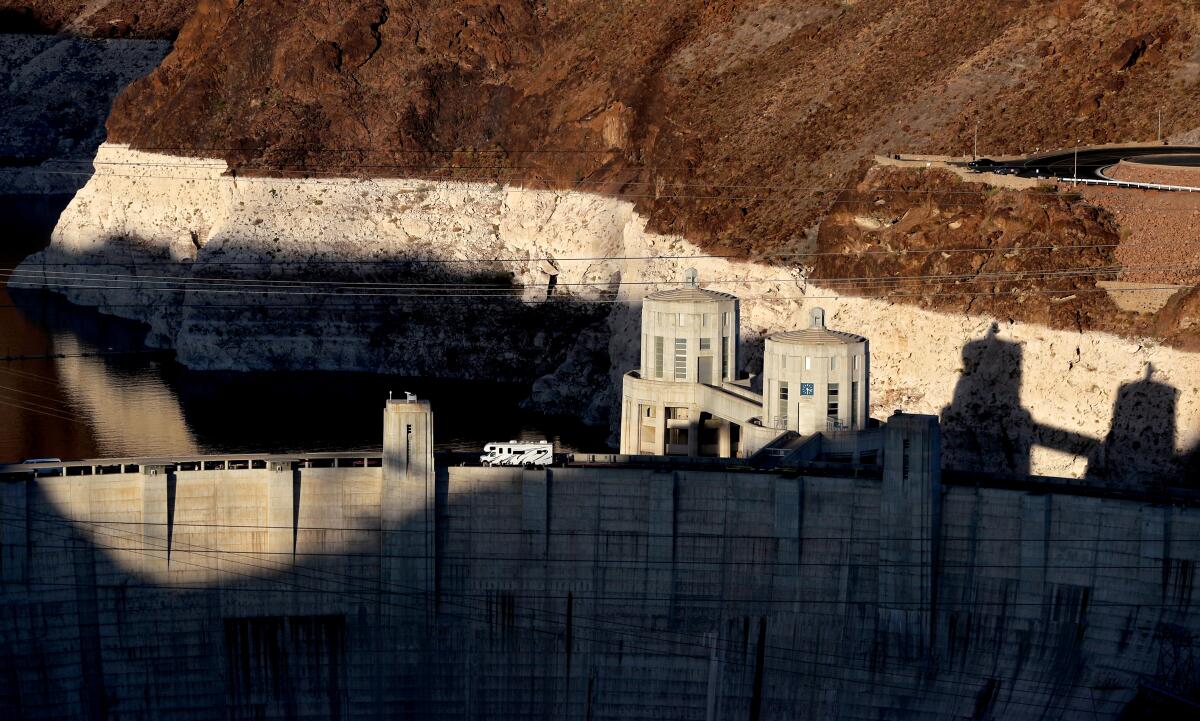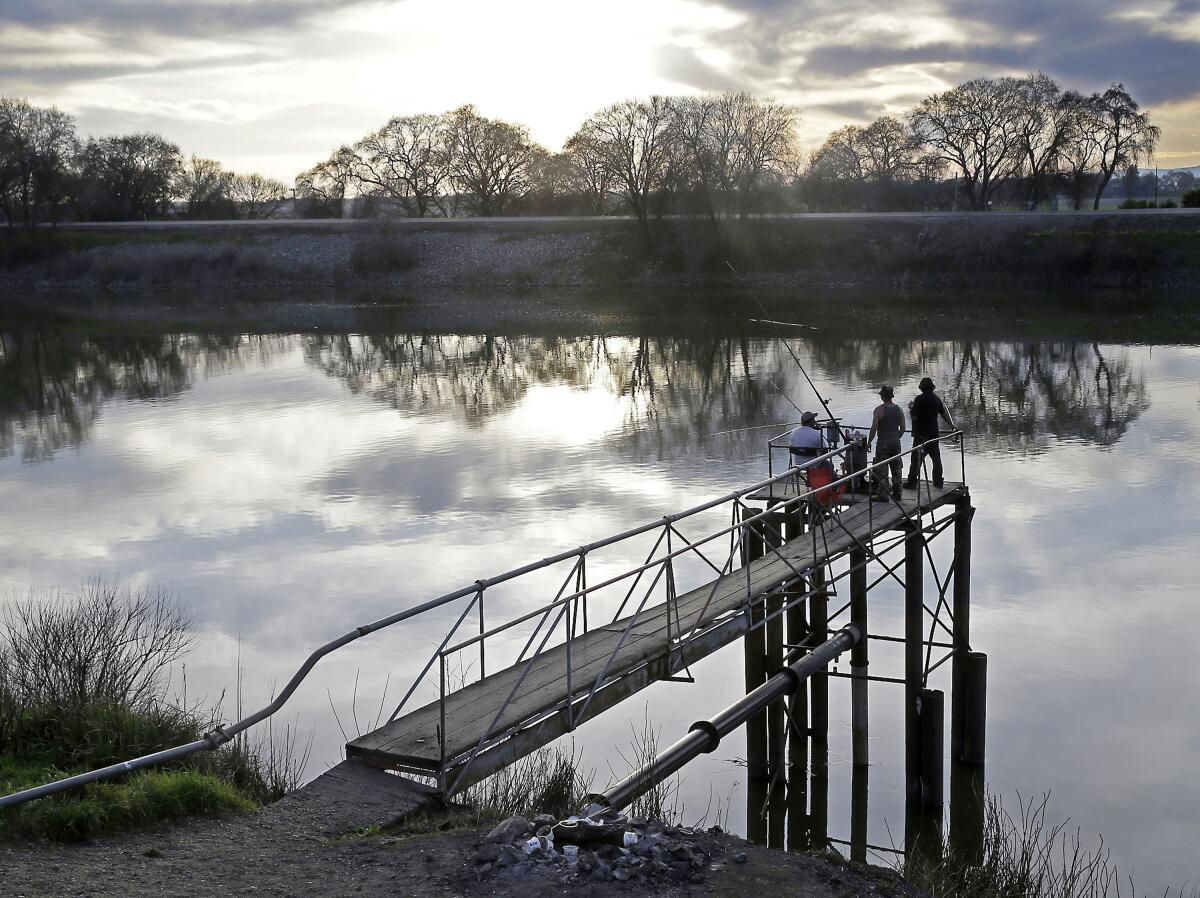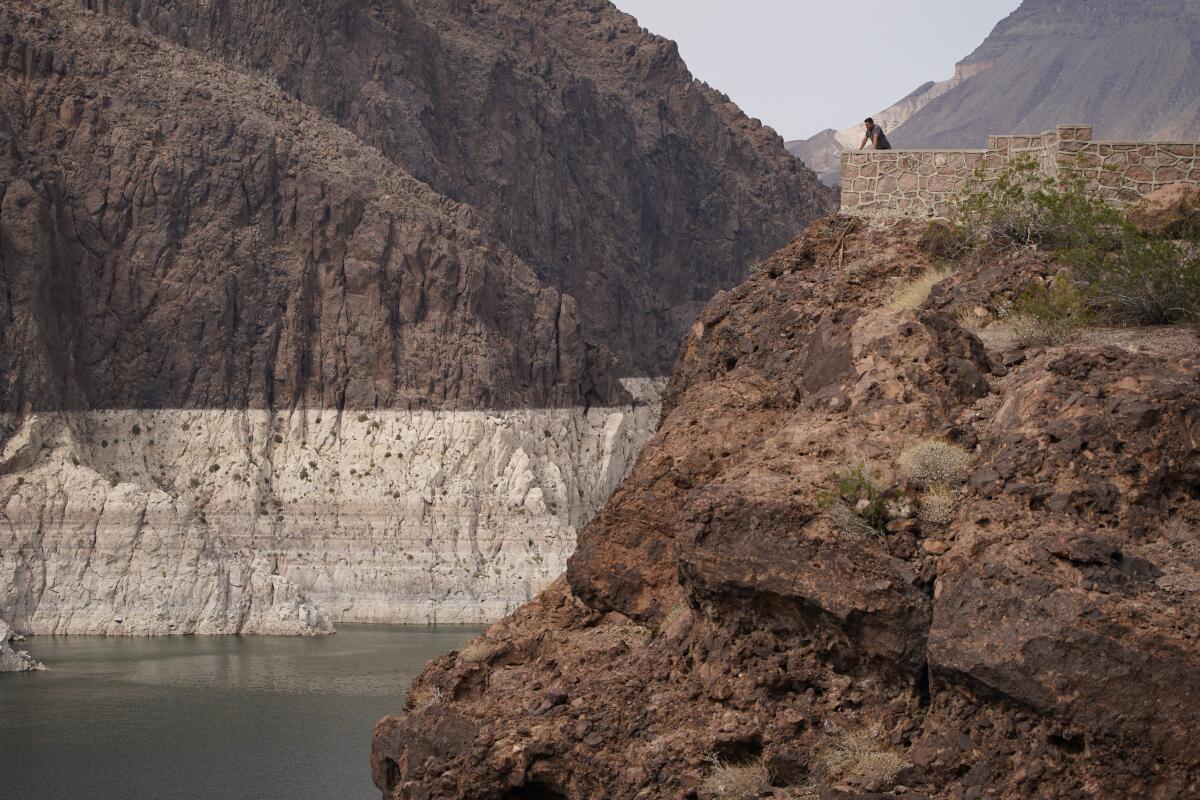San Diego continues to argue for exemption to emergency drought rules; state officials disagree

SAN DIEGO — It’s no secret that San Diego County’s top water managers are deeply frustrated with California’s new conservation rules, even as drought continues to ravage the American Southwest.
The San Diego County Water Authority, the region’s wholesaler, has repeatedly lobbied the state for an exemption to prohibitions on watering commercial and other landscapes that go into effect this month.
This story is for subscribers
We offer subscribers exclusive access to our best journalism.
Thank you for your support.
Officials point out that San Diegans are currently using little, if any, water from the state’s imperiled Sacramento River Delta, which feeds urban and agricultural communities through the 705-mile State Water Project. Rather, the region imports more than half of its water from the Colorado River, making up most of the balance with water that is desalinated, recycled or from other local sources.

However, California’s top water officials aren’t buying that logic. They’ve said the San Diego region needs to continue to cut back, especially since the Colorado River remains in the grip of a 22-year megadrought.
“You look at the Colorado River, you look at the delta, you look at these stressed systems, and it’s hard for anyone in the state to justify and say, ‘We’re good,’” said Joaquin Esquivel, chair of the State Water Resources Control Board, during a recent hearing to approve the state’s new drought restrictions.
The friction raises a fundamental question: How secure is San Diego’s tap in the Colorado River?
The answer isn’t simple.
On one hand, San Diego’s deal for river water extends until at least 2047 and was made with the largely agricultural Imperial Irrigation District, or IID, which enjoys some of the most senior rights among users in Nevada, Arizona and California. Its access to the river, for example, supersedes the powerful Metropolitan Water District of Southern California, which serves 19 million people across six counties.
On the other, the Colorado River’s largest reservoirs, Lake Mead and Lake Powell, have plummeted to levels unanticipated even just a few years ago. The U.S. Bureau of Reclamation, last month, took what it called “extraordinary” steps to hold back hundreds of billions of gallons of water in Lake Powell just so the facility could continue producing hydropower.
“You can have the best water rights in the world, but if there’s no water in the system, it’s just a piece of paper,” said Tina Shields, a water manager for the Imperial Irrigation District.
Unknown waters
Negotiations between agencies on how to equitably share the dwindling Colorado River have reached largely uncharted territory. Managers in the three lower basin states are now gearing up to thrash out a new compact by 2026.
Water experts agree the process will be tedious and time-consuming, with the threat of litigation looming over the entire process. But if an agreement isn’t reached and reservoir levels continue to fall, the secretary of the Interior could impose economically devastating water cuts.
The San Diego County Water Authority, which secured its Colorado River water from the Imperial Irrigation District in 2003, will likely play a limited role in the talks. But the countywide wholesaler and its 24 member agencies are eager to see a deal come together.
Many agency officials across Southern California have expressed fears that the process could drag out long past the deadline and potentially throw current arrangements into legal disarray.
“What I’m concerned about is a lack of a structure or plan to get to 2026,” said Dan Denham, the water authority’s deputy general manager. “We need to start that conversation and fast track it. The speed at which things happen on the river, we’re arguably already behind.”
Complicating the issue, agencies may not have another three years before the situation becomes significantly more dire. Lake Mead’s water level now stands around 1,047 feet above sea level, down from about 1,087 feet in June 2020, according to the Bureau of Reclamation. Its hydropower turbines stop working at 950 feet, and water will completely stop flowing out of Hoover Dam at 895 feet, a situation known as “dead pool.”
Punctuating the dramatic declines, several bodies, including one in a metal barrel, were recovered from the reservoir last month as water levels fell to their lowest point since the facility was first filled during the Great Depression.
“We’re certainly all watching very closely what’s happening with both Powell and Mead,” said Chris Harris, executive director of the California Colorado River Board, which will represent Gov. Gavin Newsom and the state’s collective water users in the upcoming negotiations.
Southern California water agencies have been working tirelessly over the last decade to come up with creative ways to keep water in Lake Mead. Efforts have so far included storing excess water in the reservoir and even paying farmers not to grow crops.

Additionally, the lower basin states drafted in 2007 and then again in 2019 a series of agreements that trigger cuts and other actions based on the water level at Lake Mead. Next year, the Metropolitan Water District will likely have to leave water in the reservoir for the first time under the deal. Arizona has and will almost certainly continue to be hit much harder.
“If you’d asked me a year ago, I would have said, ‘We’re in good shape in the near term,’ but if we have another really dry year, all bets are off,” said Bill Hasencamp, manager of Colorado River resources for the Metropolitan Water District.
San Diego, by virtue of its agreement with the Imperial Irrigation District, will likely stave off any restrictions on Colorado River water until after Los Angeles and surrounding regions are hard hit. In the meantime, the region is investing heavily in several wastewater recycling endeavors. The $5-billion Pure Water project, for example, is expected to meet roughly half of the city of San Diego’s drinking water needs by 2035.
The cost of reliability
The region has positioned itself well in terms of reliability, but it’s come with a price tag.
San Diegans currently pay some of the highest rates in Southern California, thanks to costly investments coupled with a whopping 40% decline in water use since 2007.
The region has been a poster child for drought conservation. But as residents ripped out lawns and installed water-efficient appliances, water agencies saw their revenue nosedive.
As a result, the water authority and local retailers have been forced to raise rates ever higher to cover an array of fixed costs, including routine maintenance, debt payments on raising the San Vicente Dam, and take-or-pay contracts for desalinated and Colorado River water.
One option for the water authority right now is to explore a deal within the 2026 negotiations that could bring down the cost of water.
“Today, they’re not at risk,” said Scott Slater, a water rights attorney with Brownstein, Hyatt, Farber and Schreck, who helped the water authority ink its deal with the Imperial Irrigation District. “The question is would they be willing to add their reliability to a solution for the Colorado River?”
The whole situation has been confusing and frustrating for residents. Some have ripped out turf in favor of succulents, decomposed granite and other drought-tolerant landscaping, only to see their monthly bills stay the same or in some cases increase.

The situation is especially tough on low-income residents who have already ratcheted their water use down to a trickle. This is the primary reason why the water authority and many of its member agencies have opposed state-mandated conservation.
“I think, you need to be very careful as we start targeting communities ... that you are not encouraging even more conservation than is already happening,” South Bay Irrigation District Director Jose Preciado recently told water authority staff during a public meeting to discuss outreach mandated by the state’s recent drought rules.
“Where there may be higher water users, maybe those can be encouraged,” he added, “but my community is already using very little water on a per-capita basis.”
While the future of the Colorado River is precarious, the San Diego region is relatively well positioned to stave off potential water cuts for decades to come. But it will come at a high cost.
More to Read
Sign up for Essential California
The most important California stories and recommendations in your inbox every morning.
You may occasionally receive promotional content from the Los Angeles Times.











